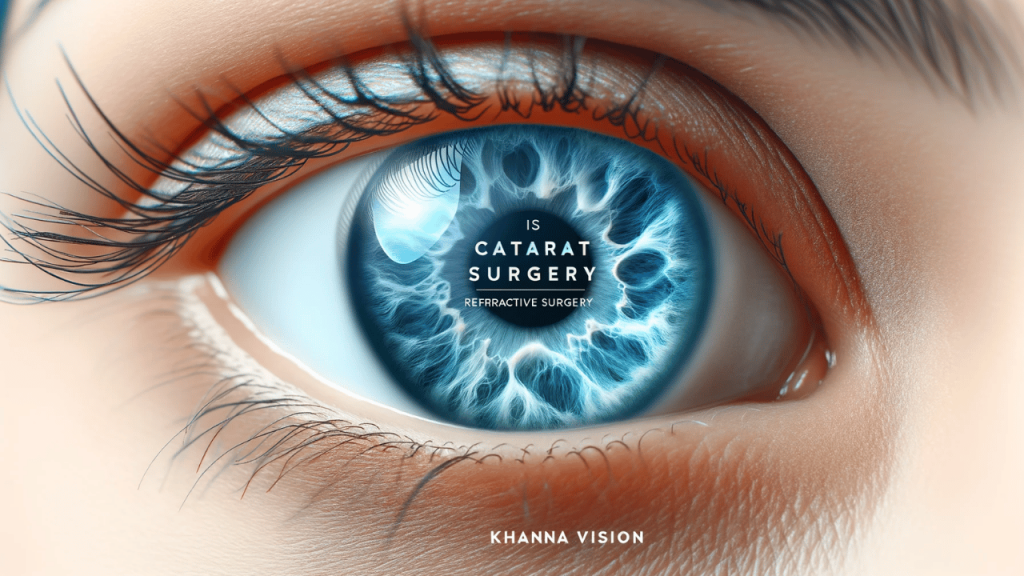Introduction
The intersection of cataract and refractive surgery is a topic of interest among many in the ophthalmic community. At its core, the question, “Is cataract surgery refractive surgery?” is a reflection of how rapidly the field of ophthalmology is evolving. With advanced technologies and surgical techniques, the boundaries between previously distinct procedures are becoming increasingly blurred.

Historical Perspective
Traditionally, cataract surgery and refractive surgery were seen as separate entities. Cataract surgery’s primary goal was to restore clear vision by removing a clouded natural lens and replacing it with a clear artificial one. In contrast, refractive surgery aimed to correct refractive errors such as myopia, hypermetropia, and astigmatism, without necessarily addressing lens opacities.
Over the decades, with advancements in intraocular lens (IOL) technology, the line between these two surgeries started to fade. Surgeons realized that while removing the cataract, they could also address refractive errors by selecting specific types of IOLs.
Modern Convergence
With the advent of premium IOLs, such as multifocal, toric, and accommodating lenses, the objectives of cataract surgery expanded. Now, it wasn’t just about treating the cataract but also about optimizing postoperative vision and potentially reducing dependence on glasses.
Institutions like Khanna Vision Institute, under the leadership of Dr. Rajesh Khanna MD, have been instrumental in pioneering these advanced surgical techniques. By integrating the principles of refractive surgery into cataract procedures, surgeons can offer a holistic approach to vision correction.
For instance, a patient with a cataract and astigmatism could opt for a toric IOL. This type of lens not only clears the vision obscured by the cataract but also corrects the astigmatic error, offering the patient sharp vision post-surgery.
Moreover, the introduction of laser-assisted cataract surgery has further bridged the gap between cataract and refractive procedures. Using lasers, surgeons can make precise incisions, soften the cataract, and even create limbal relaxing incisions to correct astigmatism, all in a single procedure.
Benefits & Considerations
The convergence of cataract and refractive surgery offers several benefits. Patients enjoy improved visual outcomes, often with reduced dependence on corrective eyewear. The ability to address multiple eye issues in one procedure also means fewer surgeries and potentially faster recovery times.
However, with these benefits come considerations. Premium IOLs and laser-assisted procedures might come at a higher cost, which may not always be covered by insurance. It’s essential for patients to have a comprehensive discussion with their ophthalmologist about the potential risks, benefits, and costs associated with various options.
Dr. Rajesh Khanna MD emphasizes the importance of individualized patient care. What might be the best option for one patient might not necessarily be ideal for another. Factors like age, lifestyle, and specific visual needs play a crucial role in determining the most appropriate surgical approach.
Conclusion
So, to answer the initial question: While cataract surgery and refractive surgery are fundamentally different, in today’s advanced ophthalmic landscape, the two often overlap. Cataract surgery has evolved far beyond its original purpose and now embraces many principles of refractive surgery. This evolution, while beneficial, necessitates a deeper understanding and careful consideration on the part of both the patient and the surgeon.
Institutions like Khanna Vision Institute, with dedicated professionals like Dr. Rajesh Khanna MD, are at the forefront of this transformative journey in ophthalmology. As technologies continue to advance, the future holds even more promise for integrated, personalized vision correction solutions.